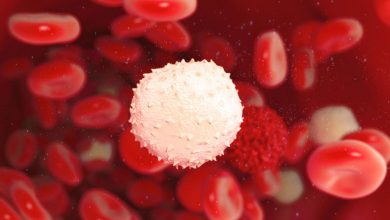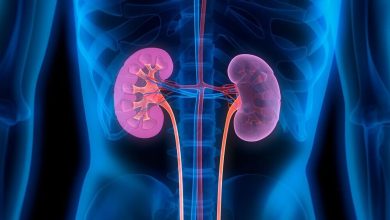Acromegaly: What Is It And What Are Its Symptoms
Acromegaly is a rare and chronic disease caused by excessive secretion of growth hormone or GH. This hormone is secreted by the pituitary gland.
In approximately 95% of cases, this excess growth hormone is associated with the development of a benign tumor of the secretory gland.
The term acromegaly is used when the disease begins in adulthood. In the event that the disease appears in childhood, it will be called gigantism.
It is an underdiagnosed disease. A prevalence of 40 cases / 1,000,000 and an incidence of about 4 or 5 cases / 1,000 inhabitants per year is estimated.
It is most frequently diagnosed between the ages of 40 and 70, but it can appear in adolescents or the elderly. Both sexes can suffer from it, although it is somewhat more common in women than in men.
What are your causes?
Acromegaly develops, as we have seen, when too much GH is produced. In adults, a tumor in the pituitary gland is the most common cause of excess this hormone. Let’s look at two types:
- Pituitary tumors : Most cases of acromegaly are caused by a non-cancerous benign tumor or adenoma of the pituitary gland. These tumors put pressure on nearby tissues as they grow and cause some of the symptoms of acromegaly.
- Non-pituitary tumors : In some people, acromegaly is caused by benign or cancerous tumors in other parts of the body such as the lungs, pancreas, or adrenal glands.
And the symptoms?
One of the most common signs of acromegaly is enlargement of the hands and feet. They can also undergo gradual changes in the shape of the face, such as protrusion of the lower jaw and eyebrows, enlargement of the nose or thickening of the lips.
Because acromegaly usually progresses gradually, early signs may not be apparent for several years. These people sometimes notice the condition by comparing old photos with current ones.
In addition to these symptoms, patients may suffer:
- Thickened and oily skin.
- Excessive sweating and body odor.
- Fatigue and muscle weakness.
- Impaired vision.
- Intense snoring due to airway obstruction.
- Erectile dysfunction.
- Irregularities in the menstrual cycle in women.
- Others.
In addition to those mentioned, it is frequent that arterial hypertension, elevated cholesterol, blood glucose or diabetes mellitus appear. Cardiac arrhythmias or disturbances in heart valve function may also occur.
Diagnosis
Acromegaly is usually diagnosed between 10 and 15 years after the onset of symptoms. This is because these appear, as we have seen, slowly and progressively.
Delayed diagnosis can lead to “serious” complications in patients. To reach the diagnosis, a thorough medical history and physical examination are essential, as well as a consistent laboratory test to measure basal growth hormone levels, among other parameters.
Once an excess of GH has been confirmed, an MRI of the hypothalamic-pituitary area must be performed to confirm the origin of the excess GH.
Can it be treated?
The most widespread treatment is surgery. This technique tries to remove the pituitary tumor. The results of this treatment are usually positive.
When the tumor is too large, it cannot be completely removed. As a consequence of this situation, the disease becomes incurable. Faced with this situation, professionals can resort to radiation and drug administration.
The drug therapy of choice is somatostatin analogues, which is the hormone that inhibits GH release. Currently, we have drugs with different mechanisms of action that allow, separately or in combination, to control the disease.
After carrying out the treatment indicated by the doctor, it is recommended to do annual check-ups to verify that the disease has not returned and that the pituitary is controlled and produces hormones normally.









